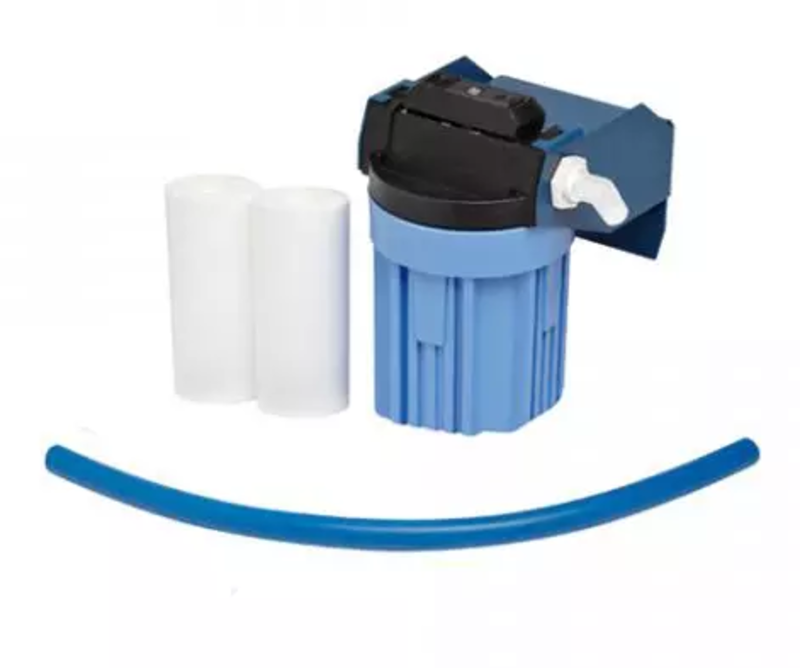A Guide to Lab Chillers and Coolers
June 14 2017 /
Machines that remove heat from a liquid through a vapor-compression or absorption refrigeration cycle are called chillers. The refrigeration cycle chiller creates waste heat that, when removed, results in greater efficiency. To accomplish this, liquid can be circulated through a heat exchanger, thus cooling the equipment. When it comes to vapor-compression chillers, they require compressors which are mechanical devices that can be powered by electric motors, steam, or gas turbines. These chillers utilize four basic types of compression: reciprocating compression, scroll compression, screw-driven compression, and centrifugal compression. Evaporative cooling heat rejection allows their coefficients-of-performance to be very high.
In a variety of mid- to large-size commercial, industrial, and institutional facilities, chilled water is used to cool and dehumidify air. This chilled water can be water-cooled, air-cooled, or evaporatively cooled. The water-cooled systems can provide more efficiency and environmental impact advantages over air-cooled or evaporatively systems. When it comes to industrial application, chilled water as well as other liquids from the chiller are pumped through process or laboratory equipment.
In air conditioning systems, chilled water is usually distributed to terminal devices which cool the air in their respective spaces. The water gets re-circulated back to the chiller to be cooled again. Cooling coils transfer heat from air to chilled water and cooling usually dehumidifies the air stream. Sometimes chillers for air conditioning systems are in need of repair, at which time emergency chillers may be used to supply chilled water. Rental chillers, mounted on a trailer, may be quickly deployed to the designated location. Large chilled water hoses are used to connect rental chillers and air conditioning systems.
Other Kinds Of Chillers
Chillers for industrial applications can be centralized, where a single chiller is used for multiple cooling needs. There can also be a combination of both centralized and decentralized chillers if the cooling requirements are the same for some applications. Centralized chillers often range from ten tons to hundreds or thousands of tons. Decentralized chillers are usually small in size and cooling capacity. An industrial chillers typically comes as a complete closed-loop system, and includes an internal tank that maintains cold water temperature and prevents temperature spikes from occurring. Closed-loop industrial chillers recirculate a clean coolant or clean water with condition additives at a constant temperature and pressure to increase the stability and reproducibility of water-cooled machines and instruments. The water flows from the chiller to the application's point of use and back.
Industrial chillers are used for controlled cooling of products, mechanisms and factory machinery in a wide range of industries including plastic, metal working cutting oils, welding equipment, chemical processing, pharmaceutical formulation, food and beverage processing, paper and cement processing, vacuum systems, semiconductors, and cooling high-heat specialized items such as MRI machines and lasers found in hospitals, hotels and campuses.
Recirculating chillers provide a consistent and reliable source of liquid coolant for cooling in laboratory, clinical, or industrial applications. Laboratories and clinical environments often require an abundant source of cool water for chilling samples. Meeting this need with tap water can be wasteful and costly.
COOLERS
Certain modern coolers are thermoelectric - they use a compressor and a refrigerant such as a refrigerator or other heat pump. Whichever they do use they make use of the Peltier effect which is when heat is in discharge and an electric current passes across a junction between two materials causing junctions to lose or gain heat. An external fan is another addition for the purpose of drawing away heat. Modern uses of this include a car's cigarette lighter or climate-controlled jackets. By reversing the current, this concept can also heat contents instead of cooling them, which is useful for keeping meals warm or to prevent items from freezing in extremely cold temperatures.
Thermoelectric coolers typically can drop their temperature or raise it which is a function of the effectiveness of the box's thermal insulation. They draw a significant amount of power and can drain a car's battery so much so that it will not start, even when the car isn’t running. Thankfully, most electric coolers have an undervoltage shutoff at around 10 or 10.5 volts to prevent this. Many come with power adapters.
In recent years, rotationally molded coolers have gained popularity. They are manufactured using a process called rotational molding. This process is when a heated and softened material is applied into a slowly rotating mold. Then the mold continues to rotate during the cooling phase and produces a thick final product. In the case of roto-molded coolers, the heated liquid plastic is applied over a thick layer of insulation. The resulting product has no seals or imperfections and is stronger than traditional coolers.
